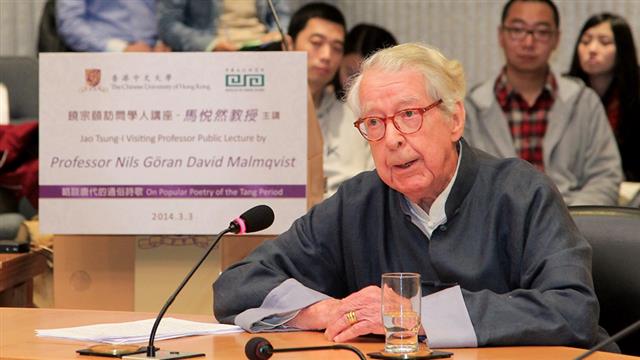The first Jao Tsung-I Visiting Professor Public Lecture was held on 3 March. Prof. Nils Göran David Malmqvist, a leading Swedish sinologist and a member of the selection committee for the Nobel Prize in Literature, was invited to deliver a lecture entitled 'On Popular Poetry of the Tang Period', attracting an audience of around 200.
Professor Malmqvist began his lecture by discussing a Tang dynasty manuscript discovered in 1969, the Shieryue santaici, (santaici on twelve months) which could probably be the first six-syllable lüshi (regulated verse) in the history of Chinese literature.
He also introduced a few six-syllable shi by non-mainstream poets of the Tang dynasty to the participants and showed them how to appreciate this genre. One stanza of a poem he read was, 'Old trees, frozen crows, mountain path. Small bridge, flowing water, human dwelling'. He said, 'Each verse in a six-syllable shi is composed of three two-syllable phrases, and each phrase is a complete unit in syntax. A momentary pause followed each two-syllable phrase. Some may think that this kind of poetry is monotonous and dull, lacking rhythm and not fit for recitation. However, I find the poetic quality lies in its architectural structure and the luxuriant imagery, which creates a lingering charm.'
According to Prof. Jao Tsung-I in his introduction to Airs de Touen-Houang, the distinction between shi and ci was not very obvious during the Tang dynasty. Professor Malmqvist also found that santaici and six-syllable shi were further developed into different genres in the later dynasties, which agreed with the findings of Professor Jao.
Through the Jao Tsung-I Visiting Professorship Scheme, a world-class scholar on Chinese cultural research is invited for academic research and scholarly exchange at the Institute of Chinese Studies of CUHK every year. It is hoped that the guest professor will be able to inspire the young generation and help to promote Chinese culture.


